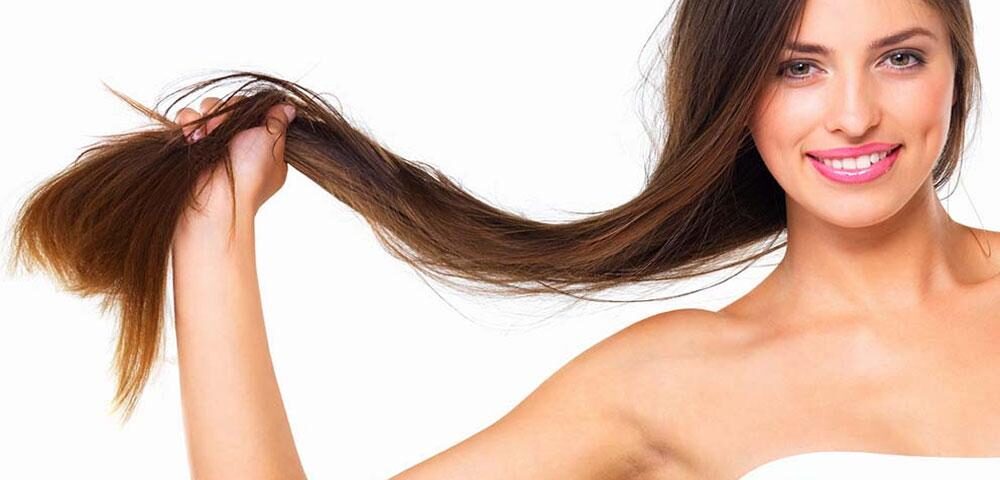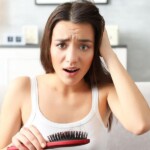Hair coloring is a practice as old as civilization – from ancient Egyptians, through Renaissance ladies, to modern beauty salons. Today, changing hair color has become one of the most popular cosmetic treatments, allowing people to express themselves and adapt their appearance to evolving trends. However, with growing awareness about hair health and care, questions arise about the potential side effects of dyeing.
In this article, we will look at the facts and myths related to hair coloring. We will also examine the impact of dyes on the hair structure and try to answer the question, does frequent coloring cause hair loss? Want to know how to consciously care for your hairstyle and enjoy a beautiful color without worries? Keep reading.
Hair loss after coloring — what you need to know
Hair coloring can be an exciting way to change your look, but for many people it comes with concerns about hair loss. Several factors contribute to this problem. Aggressive chemicals in dyes can irritate the scalp and weaken hair follicles, which in turn may lead to hair loss. This happens because cosmetic ingredients impair blood circulation in the skin, and hair bulbs stop receiving nutrients this way.
“Hair coloring can cause hair loss if done too often or with aggressive chemicals,” says Dr. Piotr Turkowski, trichologist. “The key is using gentle, natural dyes and proper hair care.”
In addition, leaving the dye on the hair for too long can cause breakage and hair loss. This is due to the chemical composition of dyes, which damages the hair structure, both the cuticle and the cortex. It is also believed that pigments responsible for changing natural hair color contribute to weakening and thinning. There are also hypotheses indicating the potential carcinogenicity of ammonia.
Therefore, whether coloring at home or in a hair salon, it is worth paying attention to the products used and, if possible, choosing those gentle on the hair and scalp. Look for dyes that are mild and contain as few aggressive chemicals as possible. Use them according to the instructions and do not leave them on the hair longer than recommended. Avoid very frequent color changes, as frequent dyeing can put too much strain on the hair.
Equally important is proper aftercare. Regular use of conditioners and hair masks can help maintain their health and strength. If you still notice that your hair begins to fall out after coloring, consult a specialist who will help you find the right solution.
Can hair dye cause allergies?
Particularly sensitive individuals may sometimes experience itching and scalp redness after coloring. This is due to an allergic reaction to the chemicals contained in hair dyes. In addition to the symptoms mentioned above, an allergy may also intensify hair loss.
Dr. Katarzyna Osipowicz, dermatologist and trichologist, notes:
“Allergic reactions to hair dyes can lead to serious scalp problems, including hair loss. It is important to always perform an allergy test before full coloring.”
The problem is further aggravated by improper use of dye. Applying too much product or leaving it on too long can strain hair follicles. You should also be careful when mixing colors and never use expired products.
Of course, not everyone experiences problems after a visit to the hairdresser. Many people regularly color their hair without noticing any negative effects. However, it is advisable to choose dyes that contain high-quality ingredients and follow the instructions carefully to minimize the risk of hair loss.

How to protect hair from hair loss after coloring?
There are several ways to protect dyed hair from falling out. First of all, as already mentioned, it is important to check the ingredients of the dyes. This way you can avoid unpleasant allergic reactions or scalp irritation. It is best to look for products in which ammonia is replaced with natural components. Although ammonia ensures perfect absorption of the pigment, it seriously damages the structure of the hair.
It is also advisable to reduce the frequency of coloring, as too frequent dyeing can weaken the structure and lead to hair loss. Give your hair time to regenerate between treatments and take care of it in the meantime. Use moisturizing products that protect against dryness and prevent split ends. It is also worth trying natural cosmetics that do not contain harmful ingredients and do not irritate the scalp.
Finally, when changing hair color, follow the manufacturer’s recommendations and do not keep the dye on the hair for too long. By following these tips, you can help protect your hair from falling out without giving up coloring.
What ingredients to look for in hair dye products?
By using natural products, you can avoid harmful reactions and provide your hair with essential care. How to choose a cosmetic for dyed hair? One option is coloring with plant-based dyes. Such products are free from harmful chemicals, making them less aggressive on hair and scalp. Their use may limit hair loss and improve hair condition.

For care, you can also use natural products such as coconut oil or aloe vera. Coconut oil moisturizes and gives elasticity to hair. Aloe vera can have a soothing effect on the scalp and relieve irritation. Both are natural alternatives to traditional hair care cosmetics and can improve hair health.
However, it is important to pay attention to the possibility of allergies to plant substances, especially in high concentrations. Therefore, always check whether dyes, conditioners, and shampoos contain ingredients that may cause adverse reactions in you. It is best to carefully read the leaflet, visit the manufacturer’s website, or check customer reviews to make sure the product is suitable for your hair. In addition, it is always good practice to apply the product to a small patch of skin first to check its safety.
Hair coloring and hormonal hair loss
People diagnosed with hormonal problems causing hair loss should be especially cautious when coloring. Hormonal imbalance can weaken hair follicles and increase their susceptibility to damage. In this situation, it is advisable to choose gentle dyes and consult a specialist.
Therefore, especially in such cases, it is best to choose shades as close as possible to your natural hair color. This may help create the illusion of fuller hair and reduce scalp visibility. Look for products labeled “ammonia-free” or “nourishing,” as they are less harmful.
Dr. Piotr Turkowski, trichologist and hair transplant specialist, advises:
“For people with hormonal problems, choosing ammonia-free dyes and ensuring proper hair care is key to minimizing the risk of hair loss.”
Can hair loss after coloring be stopped?
Treatment should begin with diagnosing the cause of hair loss. In addition to coloring, the causes may also include genetic factors, as in the case of androgenetic alopecia, hormonal, environmental, related to improper care, or even scalp diseases such as alopecia areata. If, however, you are sure that hair loss is related to coloring, remember the basic rule: hair loss after dyeing may decrease only if you stop coloring. If the hairstyle was only thinned and the hair weakened, over time you will notice new, healthy hair growing back.
Dr. Jakub Kret adds:
“If during coloring hair follicles have been irreversibly damaged, only modern methods such as hair transplantation can help restore the natural look of the hairstyle. Consultation with a doctor is crucial to choose the most appropriate solution.”
However, if the follicles have been permanently damaged during coloring, only advanced methods can help conceal baldness. One of the most advanced is hair transplant. The procedure, regardless of the technique used, allows for permanent restoration of the natural look of the hairstyle.
Let us remember that every method requires an individual consultation with a doctor, who will assess the health of the scalp and choose the most appropriate form of treatment. Thanks to advances in aesthetic medicine, baldness no longer has to be a problem without a solution. With the right approach and the use of available technologies, you can enjoy a full head of hair and healthy locks.





